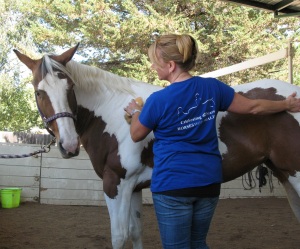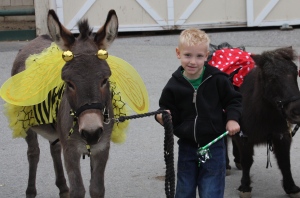
As I was dropping hundreds of invitations to this year’s “Jewels and Jeans Gala” into the mailbox at Roberts Market, I thought about the chasm between NCEFT’s need for fundraising, and the public’s understanding of the costs associated with our facility. Our annual Gala raises roughly one-quarter of our year’s operating budget, funding horse care, patient scholarships, facility upkeep, and dozens of other areas of need. Though income from our services offered (hippotherapy, therapeutic riding, etc.) helps fund NCEFT, without the continued support from generous donors, we’d be unable to help all of the children and adults who seek therapy at our facility.
Unlike most traditional therapy centers, NCEFT employs a specialized staff with around the clock needs. These team members are at the facility 365 days a year, and accept food, board, and the occasional carrot, in exchange for their service. The 14 therapy horses under our care are vital to the success of our program, and as such, receive the best upkeep we can offer. However, employing a stable of horses comes at a cost, one that may surprise most. Let’s take a peek into the daily routine of a therapy horse, and see just what goes into keeping our barn running.
7 am – Horses get an individual portion of grass hay depending on their weight, height, and exercise level.
8 am – The Barn staff begin grooming and exercising horses set to work that day. Each horse receives an hour of individual attention.
9 am – Barn stalls and upper stall-paddock combos are cleaned and rebedded with fresh shavings.
10 am – Therapy sessions begin. Each session utilizes a horse handler, therapist, and as many as three volunteers. Up to three or four sessions may run every half hour.
12 pm – Horses get a specialized lunch with appropriate supplements and medications. Our horses receive everything from supportive care for sensitivity to diet changes to apple-flavored electrolytes.
5 pm – Therapy sessions end for the day and horses get an evening meal similar to their morning feeding.
When combined, the cost of twice daily feeding, individual grooming and exercise, stall cleaning, specialized supplemental grain, and session staffing (horse handler and therapist), comes out to between $115 and $300 a session, depending on the type of therapy.
So, we ask for your help. We ask that you consider giving to NCEFT in whatever way you can. Whether small or large, your donations make a difference to patients and families who find hope and healing within our fences. At $200, the purchase of a ticket to our Gala not only provides an evening filled with good food, great music, and fantastic company, but goes so far towards helping children like Chase. Doctors predicted Chase would never walk or talk, but four years after starting therapy at NCEFT he’s doing both.





